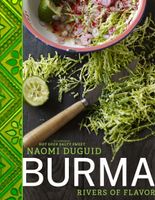Advertisement
Sesame; Sesame Oil; Sesame Paste; Sesame Seeds
Appears in
By Naomi Duguid
Published 2012
Sesamum indicum is one of the oldest sources of oil. The plant is an annual shrub that grows about 5 feet tall and is cultivated for its seeds and for the oil that can be pressed from them. The seeds are teardrop shaped and can be any color from black or tan to nearly white, but inside the outer husk all seeds are white.
The sesame oil produced and used in Burma is made from unroasted sesame seeds, so it is almost clear and has a light nutty taste. (By contrast, in China and Japan, most sesame oil is brown, because it’s made of seeds that have been roasted; the process gives it an intense roasted-sesame flavor.) Sesame oil keeps well, is high in polyunsaturated fatty acids (oleic and linoleic), and is stable when heated. This makes it a very desirable cooking oil. Unroasted sesame oil is sold in South Asian groceries (labeled “gingelly” or “gingili” oil) and is also available in some Middle Eastern groceries.


